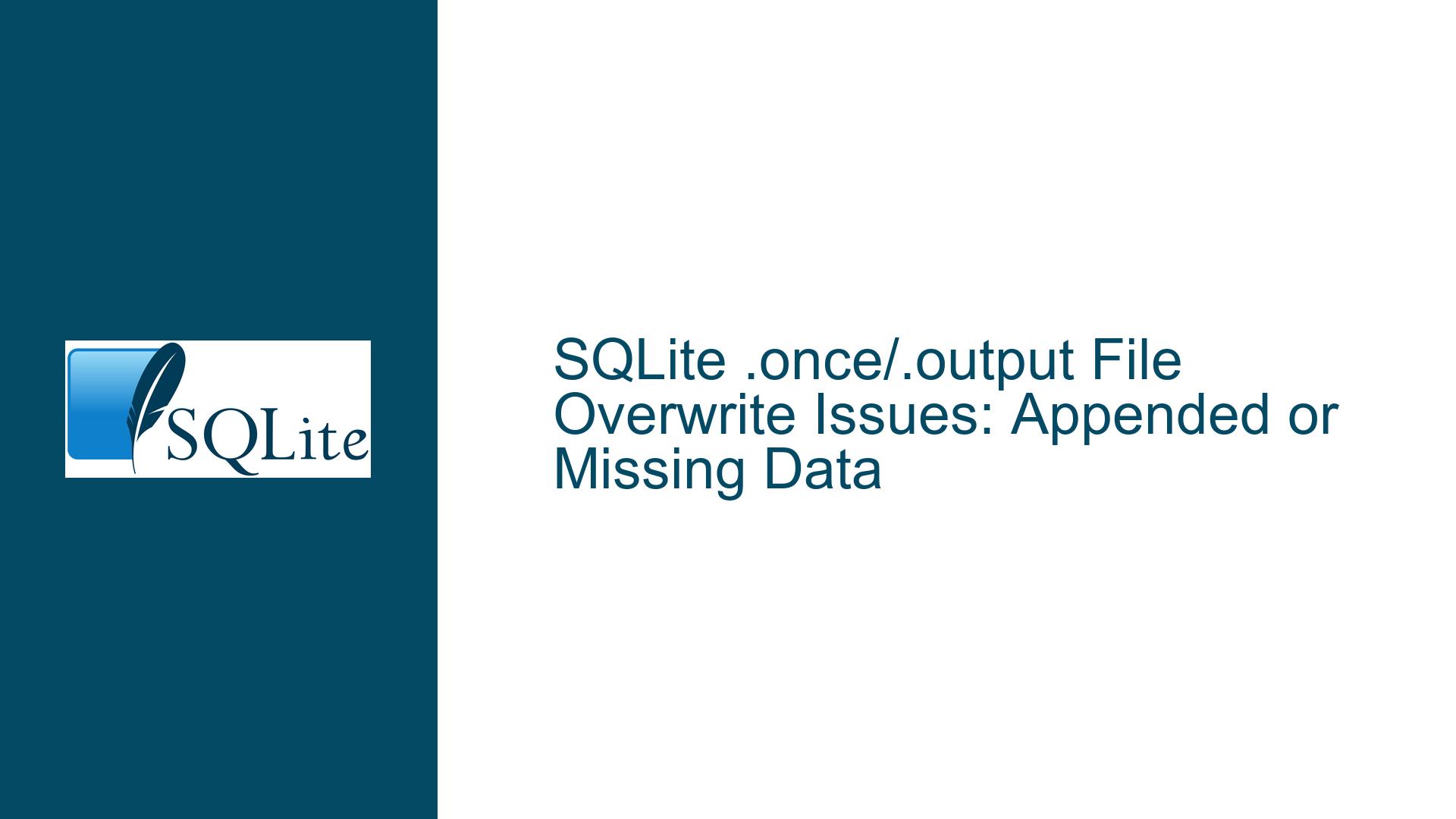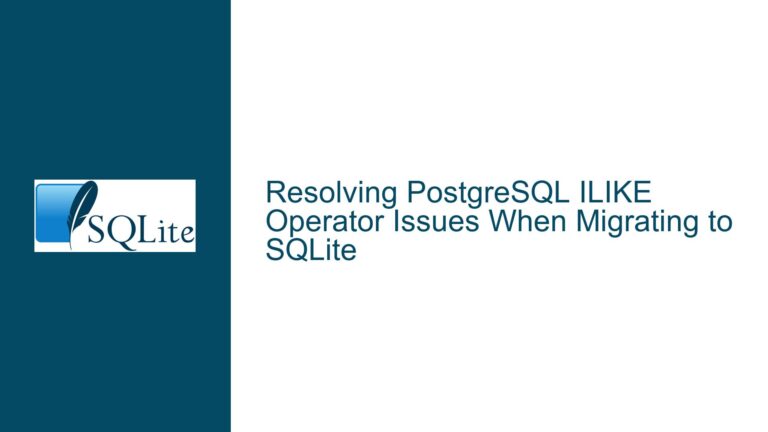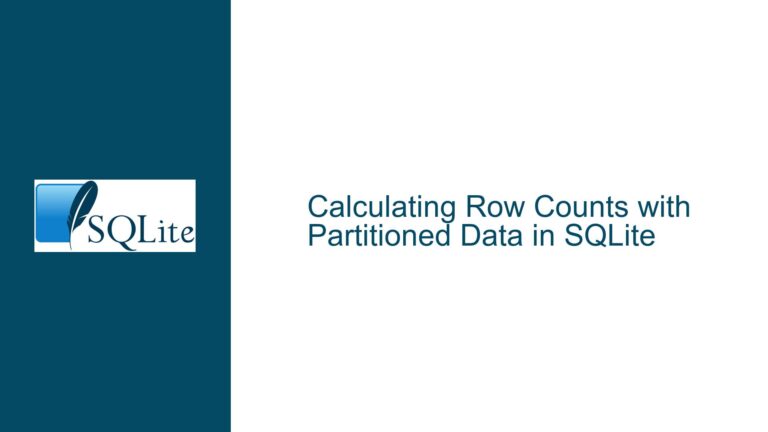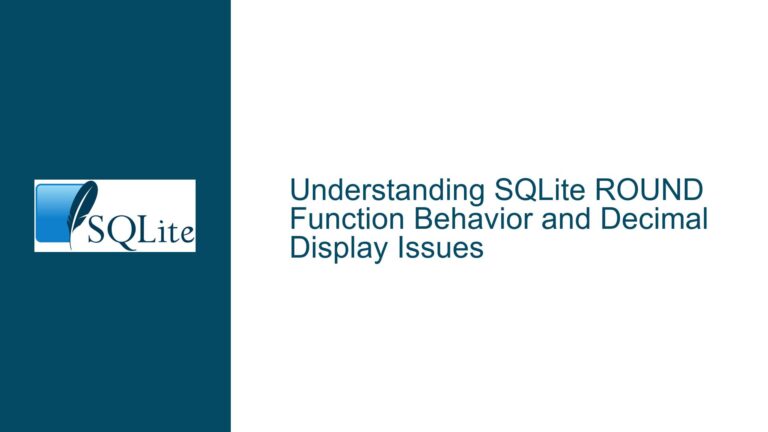SQLite .once/.output File Overwrite Issues: Appended or Missing Data
Understanding Output Command Behavior in SQLite CLI
The SQLite command-line interface (CLI) provides utilities like .once and .output to redirect query results to files. However, improper use of these commands can lead to unexpected behavior, such as output files being appended instead of overwritten or remaining empty. This guide dissects the root causes of these issues and provides actionable solutions to ensure reliable file output management.
Issue: Output File Appending or Missing Data
Symptom 1: Output File Appended Instead of Overwritten
When using .output or .once, the output file accumulates results from successive queries instead of being overwritten. For example:
- Executing
SELECT 100 AS val;followed bySELECT 200.89 AS value;appends both results to the file.
Symptom 2: No Data Written to File
When using .once, the output file remains empty or is not created. This occurs even though the query appears valid and no errors are reported.
Critical Observations
- Command Order Matters: The placement of
.onceand.outputrelative to the query and other CLI commands (e.g.,.import) determines whether output is captured. - Session State Persistence: Output redirection settings persist across commands unless explicitly reset.
- Query Results Influence Output: If a query returns no rows,
.oncewill not create or overwrite the file.
Root Causes of Output Misbehavior
1. Improper Command Sequencing with .once
The .once command applies only to the next SQL statement executed. If non-SQL commands (e.g., .import, .mode) are issued after .once but before the target query, the .once directive is "consumed" by those commands, leaving the subsequent query without redirection. For example:
.once output.txt
.import data.csv MyTable -- Non-SQL command consumes .once
SELECT * FROM MyTable; -- Output goes to stdout, not output.txt
2. Unclosed Output Stream with .output
The .output command opens a persistent stream to the specified file. Subsequent queries append results until the stream is closed with .output (no arguments). For example:
.output data.txt
SELECT 1; -- Writes to data.txt
SELECT 2; -- Appends to data.txt
.output -- Close stream
3. Empty Query Results
If a query returns no rows (e.g., due to a WHERE clause filtering all results), .once will not write to the file. This can leave the file empty or missing, especially if the query logic is flawed.
4. File System Permissions
Lacking delete permissions on the output file prevents SQLite from truncating or overwriting it. On Windows, for instance, read-only files or restricted directories (e.g., C:\Program Files) may force append-only behavior.
5. Version-Specific Bugs or Edge Cases
While rare, older SQLite versions (pre-3.46.0) might exhibit quirks in output handling, especially with non-ASCII paths or filesystem-specific interactions.
Resolving Output File Issues: Step-by-Step Solutions
Step 1: Validate Query Results
Before troubleshooting output commands, confirm that the query returns data:
-- Test query in interactive mode
.headers ON
.mode column
SELECT * FROM MyTable LIMIT 1;
If no results appear, revise the query logic (e.g., check JOIN conditions, WHERE clauses, table names).
Step 2: Use .once Correctly
Ensure .once directly precedes the target query, with no intervening commands:
-- Correct usage
.once output.txt
SELECT * FROM MyTable;
-- Incorrect usage (output.txt remains empty)
.once output.txt
.import data.csv MyTable -- .once consumed by .import
SELECT * FROM MyTable; -- Output not redirected
Step 3: Reset .output Streams
Explicitly close the output stream after each query to prevent appending:
.output results.txt
SELECT * FROM TableA;
.output -- Close stream
-- Next query writes fresh content
.output results.txt
SELECT * FROM TableB;
.output
Step 4: Check File Permissions
Verify write and delete permissions for the output directory and file:
- Windows: Right-click the folder → Properties → Security → Edit permissions.
- Linux/macOS: Use
ls -lto check permissions andchmodto grant write access.
Step 5: Simplify and Isolate the Problem
Create a minimal reproducible example:
-- Clean test case
.once test.txt
SELECT 'Hello, World!' AS message;
If test.txt is created successfully, incrementally reintroduce complexity (e.g., .import, joins).
Step 6: Use Absolute Paths and Standardize Separators
Avoid relative paths and mixed path separators:
-- Windows
.once C:/temp/output.txt
-- Linux/macOS
.once /tmp/output.txt
Step 7: Inspect Output File State
After running commands, check the file’s existence, size, and content:
-- Windows
.shell type output.txt
-- Linux/macOS
.shell cat output.txt
Step 8: Update SQLite
Ensure you’re using SQLite 3.46.0 or newer:
SELECT sqlite_version();
Step 9: Avoid Concurrent File Access
Close other programs (e.g., text editors) that might lock the output file.
Advanced Scenarios and Workarounds
Handling Large or Complex Queries
For multi-step scripts, use transactional control to isolate output:
BEGIN TRANSACTION;
.output step1.txt
SELECT * FROM TableA;
.output
.output step2.txt
SELECT * FROM TableB;
.output
COMMIT;
Automating Output Reset
Wrap queries in a script with forced stream closure:
-- script.sql
.once output.txt
SELECT * FROM MyTable;
.output
Execute via:
sqlite3 mydb.db < script.sql
Debugging Empty Output Files
Enable diagnostics to trace command execution:
.echo ON
.once debug.txt
SELECT * FROM MyTable;
By systematically addressing command sequencing, stream management, and environmental factors, users can reliably control SQLite’s file output behavior. Always validate query results and permissions before assuming a bug in the CLI tools.






